
The sea holds countless secrets, swallowing ships and their stories into its depths. While many vessels sink, lost forever to the crushing pressure and eternal darkness, some reappear, ghost ships adrift with no crew, no explanation, and a chilling aura of mystery. These derelict vessels, found listing or slowly sailing across the waves, spark the imagination and fuel tales of hauntings, sudden disappearances, and the unpredictable power of the ocean.
Here, we explore 10 of the most mysterious abandoned ships ever found drifting at sea, each with a story more perplexing than the last.
- 1. The Mary Celeste – The Quintessential Ghost Ship
- 2. The Baychimo – The Arctic Wanderer
- 3. The SS Ourang Medan – The Ship of Death
- 4. The Svalbard – The Antarctic Discovery
- 5. The Jian Seng – The Oil Tanker Mystery
- 6. The Kaz II – The “Ghost Yacht” of Australia
- 7. The MV Joyita – Another Pacific Puzzle
- 8. The Ghost Ship of Aoshima – A Modern, Unsettling Find
- 9. The High Aim 6 – Another Asian Fishing Vessel Mystery
- 10. The Ghost Ship of Christmas Island – A Recent Unidentified Drifter
- Conclusion
1. The Mary Celeste – The Quintessential Ghost Ship
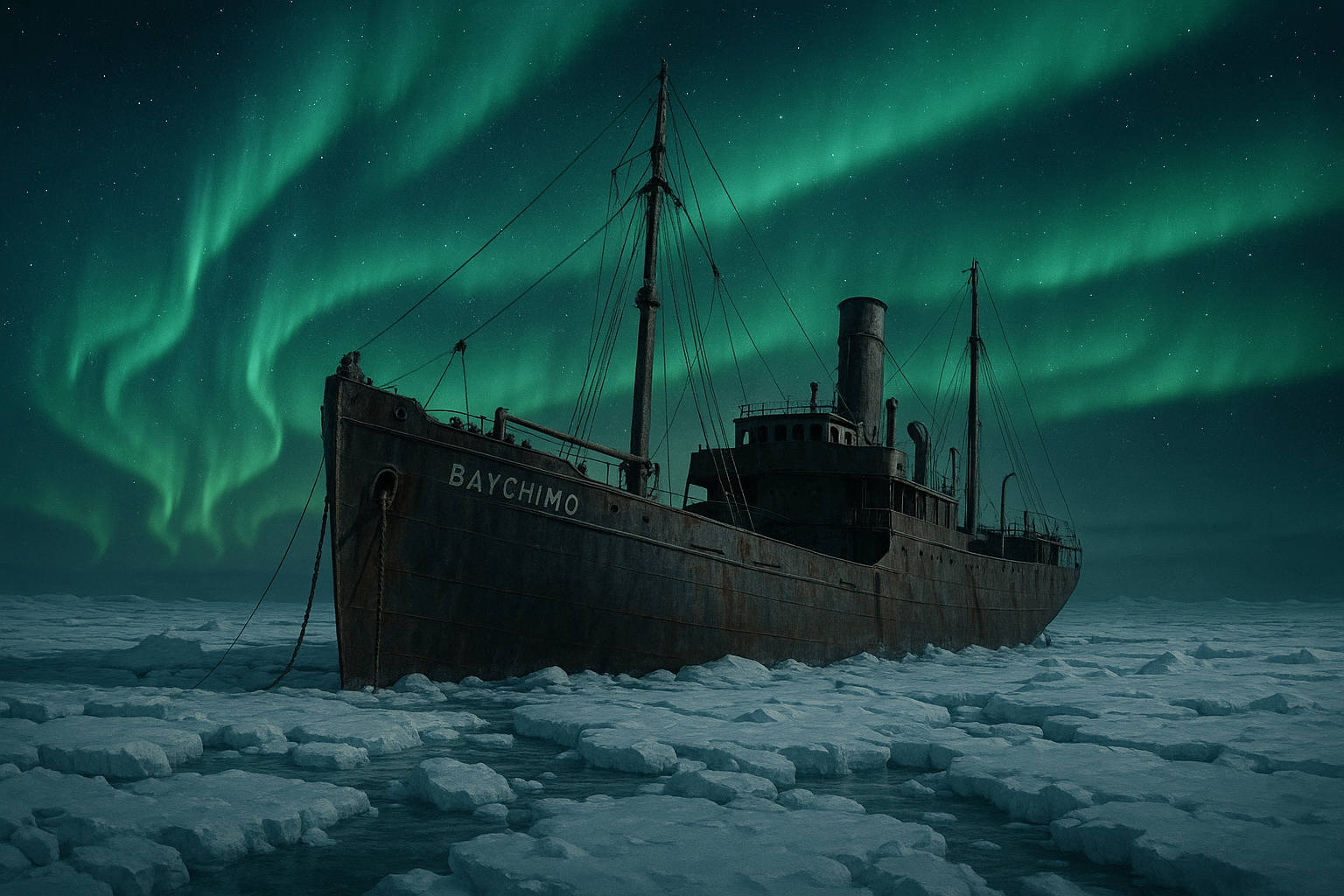
No discussion of mysterious abandoned ships is complete without the Mary Celeste. Discovered on December 4, 1872, adrift in the Atlantic Ocean between the Azores and Portugal, this brigantine is arguably the most famous ghost ship in history.
Background:
The Mary Celeste was a 103-foot brigantine built in Nova Scotia, Canada, originally named Amazon. After several changes in ownership and a few minor mishaps, she was renamed Mary Celeste and purchased by American businessman and part-owner James Winchester. Her captain for the fateful voyage was Benjamin Briggs, a religious and experienced seaman. Aboard with him were his wife Sarah and their two-year-old daughter Sophia, along with a crew of seven. The cargo consisted of 1,701 barrels of denatured alcohol, bound for Genoa, Italy.
The Discovery:
On November 7, 1872, the Mary Celeste departed Staten Island, New York. Less than a month later, the British brigantine Dei Gratia, under the command of Captain David Morehouse, spotted her about 400 miles east of the Azores. The Dei Gratia had sailed from New York just eight days after the Mary Celeste and her crew knew Captain Briggs. Something was clearly wrong; the Mary Celeste was sailing erratically.
Conditions Onboard:
Captain Morehouse sent a boarding party led by his chief mate, Oliver Deveau. What they found was profoundly unsettling. The ship was structurally sound and under sail (though poorly set). Her cargo was largely intact, save for nine barrels of alcohol which were found empty later. The ship’s stores of food and water were sufficient. Personal belongings of the crew and the Briggs family, including valuables and Sarah Briggs’s piano, were untouched. The ship’s logbook was found, with the last entry dated 8 a.m. on November 25th, indicating the ship was just off Santa Maria Island in the Azores – over a week before she was discovered, and significantly off course from where she was found.
The Missing:
The most disturbing discovery was the complete absence of all ten people who had been aboard. There was no sign of a struggle, no indication of violence. The ship’s sole lifeboat was missing, and the chronometer and sextant were also gone, suggesting they might have been taken intentionally, perhaps implying an orderly (though hasty) departure. However, the fact that they left behind all their possessions and a perfectly seaworthy vessel baffled investigators.
Theories:
The disappearance of the Mary Celeste‘s occupants has spawned countless theories:
- Mutiny/Piracy: Quickly ruled out as valuables were left behind and there was no sign of violence.
- Seaquake/Submarine Eruption: A sudden underwater event might have caused panic, leading the crew to abandon ship in the lifeboat, only to be lost at sea. However, the ship sustained no damage.
- Fumes from Alcohol Cargo: The denatured alcohol cargo produced flammable vapors. Perhaps a small explosion or the fear of one led the crew to evacuate to the lifeboat temporarily, intending to tie it to the ship. A sudden gust of wind or a broken line could have left them adrift. This is one of the more plausible theories, especially considering the missing lifeboat and navigation instruments.
- Waterspout: A large waterspout could have threatened the ship, causing evacuation, with a similar outcome to the fume theory.
- Insurance Fraud: Disproven as the ship was not over-insured.
- Paranormal Explanations: As with many unsolved mysteries, theories involving sea monsters, aliens, or supernatural forces have been proposed, though they lack evidence.
Legacy:
The mystery of the Mary Celeste endures because of the sheer inexplicable nature of a seemingly capable vessel being abandoned by her entire complement without clear cause. Despite extensive investigation and speculation, the fate of Captain Briggs, his family, and crew remains one of the sea’s greatest enigmas, cementing the Mary Celeste‘s place as the archetypal ghost ship.
2. The Baychimo – The Arctic Wanderer
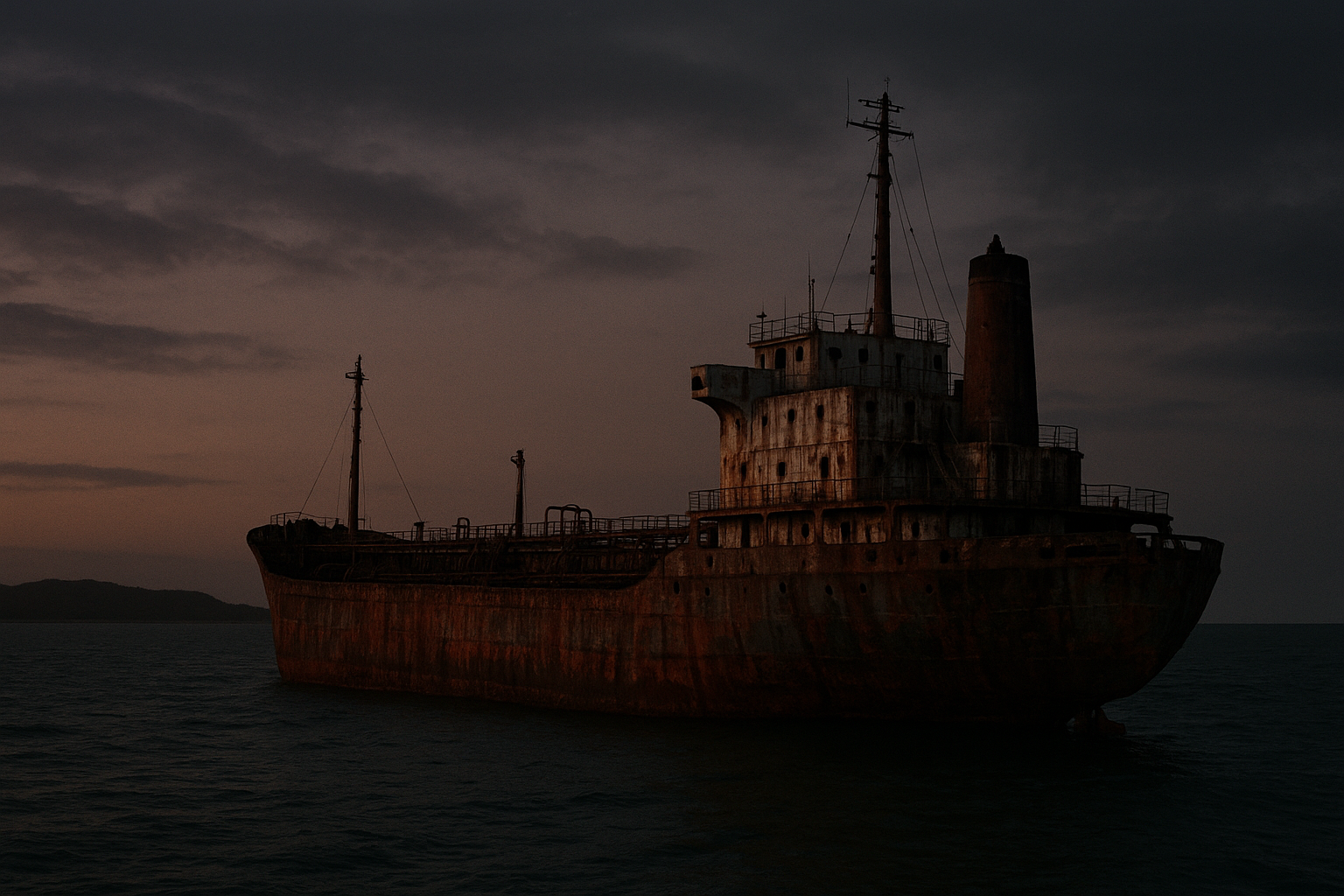
The Baychimo wasn’t just found adrift once; she became a persistent ghost ship of the Arctic, sighted repeatedly over decades after being abandoned.
Background:
Built in 1914 in Sweden, the Baychimo was a 1,322-ton cargo steamer primarily used by the Hudson’s Bay Company to trade for furs with Inuit settlements along the Victoria Island coast in the Canadian Arctic. She was ice-reinforced and designed for treacherous northern waters.
The Abandonment:
In October 1931, the Baychimo was caught in pack ice near Barrow, Alaska. The crew briefly abandoned her but returned when the ice seemed to ease. A few days later, a severe blizzard struck. When it cleared, the Baychimo had vanished. The crew assumed she had sunk.
The Return:
To their astonishment, the Baychimo was found a few days later, still afloat, some 45 miles from where she was lost. Most of the crew were airlifted out, but a smaller caretaker crew remained, planning to wait for better conditions or salvage the ship. However, a massive blizzard hit on October 15th. The crew sought shelter on land. When the storm subsided, the Baychimo was gone again. This time, they were certain she had sunk.
The Ghost Ship Appears:
Just a few days later, an Inuit hunter spotted the Baychimo intact, miles away. The caretaker crew reached her, salvaged what they could, and decided the ship was too damaged by the ice to be retrieved. They formally abandoned her. But the Baychimo‘s story was far from over.
Decades Adrift:
Instead of sinking, the Baychimo continued to drift, trapped in the Arctic ice floes. She was sighted numerous times over the next 38 years by Inuit hunters, trappers, and even pilots. Reports came from Alaska, Canada, and even as far east as the Beaufort Sea. Each sighting added to her legend as the “Ghost Ship of the Arctic.”
- Sighting examples: Spotted by a fur trapper in 1932, 300 miles east of where she was abandoned. A group of Inuit boarded her in 1933, trapped inside for 10 days by a sudden storm. Seen embedded in ice floes in 1939. Sighted multiple times throughout the 1940s and 1950s. The last confirmed sighting was in 1969, embedded in the ice pack between Barrow and Icy Cape, Alaska.
The Vanishing Again:
After 1969, the Baychimo was never definitively seen again. She likely either finally sank, or became permanently trapped and eventually crushed by the ever-shifting, immense forces of the Arctic ice.
Mystery:
The mystery of the Baychimo lies not in the disappearance of a crew, but in the ship’s own incredible resilience and seemingly endless journey through one of the world’s harshest environments after being left for dead. How she avoided being crushed or sinking for so long remains remarkable, making her the true Flying Dutchman of the North. In 2006, the Alaskan government launched a search for the Baychimo‘s wreck, but found nothing.
3. The SS Ourang Medan – The Ship of Death
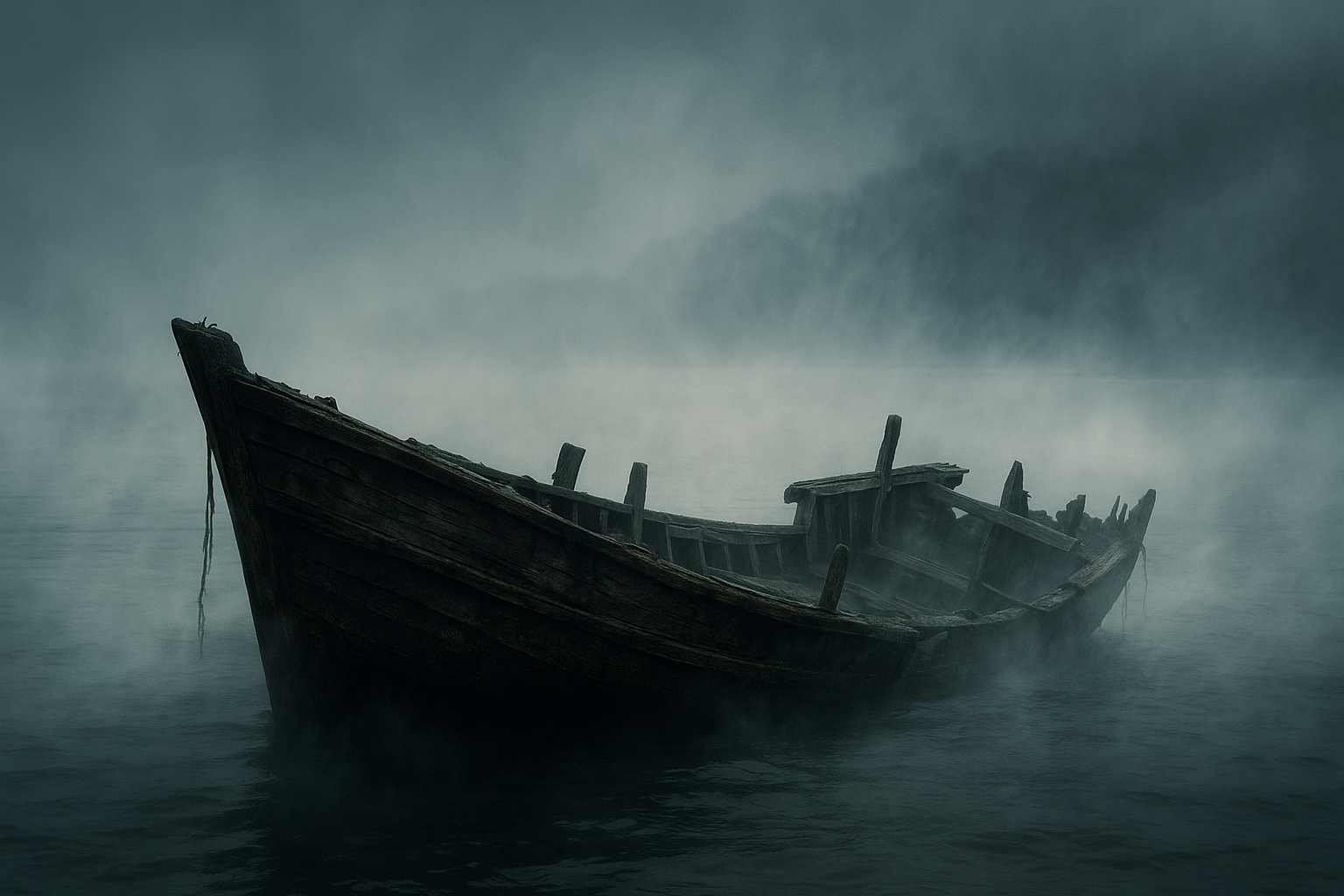
Perhaps the most sinister and unsettling ghost ship tale is that of the SS Ourang Medan, a Dutch freighter whose crew allegedly died under terrifying and mysterious circumstances.
The Alleged Incident:
The story dates back to 1947 (or possibly 1948, accounts vary). Distress signals were reportedly received by multiple ships navigating the Strait of Malacca. The messages, sent via Morse code from the SS Ourang Medan, grew increasingly frantic: “SOS Ourang Medan S.O.S. from Ourang Medan… we are sailing… [illegible]… probably my last word… [illegible]… We die.” The transmission ended with a chilling, final message: “I die.”
The Discovery:
The American ship Silver Star (or Star of Bethlehem in some retellings) was the closest and responded to the distress call. Upon locating the Ourang Medan, the boarding party found a scene of absolute horror. The entire crew, including the captain and officers on the bridge, were dead. Their bodies were scattered across the decks, in the wheelhouse, and in the radio room.
The State of the Bodies:
The most disturbing detail was the condition of the bodies. They were described as being frozen in postures of terror, their faces contorted, mouths open, and eyes staring upwards, as if seeing some unseen horror or trying to ward off an attack. Even the ship’s dog was found dead, growling at an invisible enemy. There were no apparent injuries or signs of struggle on the bodies themselves.
The Fate of the Ship:
As the Silver Star crew prepared to tow the Ourang Medan, smoke began to rise from the ship’s cargo hold. The boarding party hastily retreated. Shortly after, the Ourang Medan exploded violently and sank, taking her secrets and the bodies of her crew to the bottom of the sea. This prevented any thorough investigation into the cause of death or the cargo.
The Mystery and Skepticism:
The Ourang Medan story is widely considered a maritime legend or hoax by many historians and researchers. Despite the chilling details and multiple retellings, concrete evidence confirming the existence of the SS Ourang Medan as a registered vessel, the receipt of distress signals, or the Silver Star‘s encounter is scarce or non-existent in official records. No official investigation report exists.
Possible (Though Unproven) Explanations:
For those who believe the story has some basis in reality, theories abound:
- Chemical Agent: The ship might have been secretly carrying a dangerous chemical (like nerve gas) or hazardous materials that leaked, overwhelming the crew. The subsequent explosion could have been caused by a reaction or ignition of the cargo.
- Carbon Monoxide Poisoning: A faulty boiler or ventilation issue could have filled the ship with odorless carbon monoxide, leading to the crew’s rapid and agonizing death, followed by an explosion in the engine room.
- Supernatural/Paranormal: The terrifying state of the bodies fuels speculation about supernatural events, though this is outside the realm of verifiable evidence.
- Hoax/Urban Legend: The most likely explanation is that the story originated as a sensationalized tale, spread through maritime circles and publications without rigorous fact-checking, evolving over time into the chilling narrative we know today.
Despite the lack of concrete proof, the tale of the SS Ourang Medan persists as a chilling and uniquely disturbing ghost ship story, a cautionary maritime fable about unknown horrors at sea.
4. The Svalbard – The Antarctic Discovery
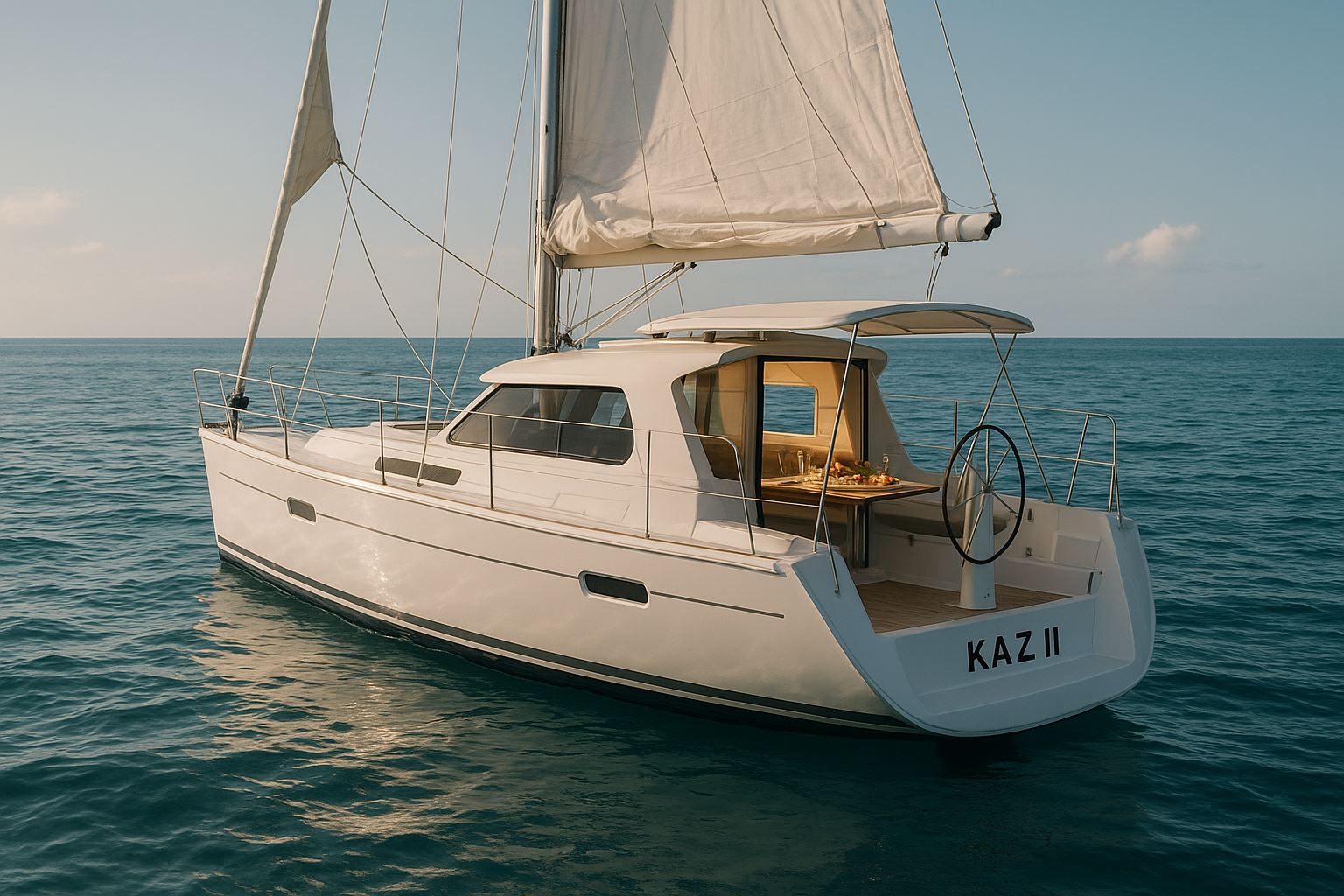
Not all ghost ships are ancient tales. Some are found in more recent times, adding contemporary mysteries to the maritime lexicon. The Svalbard was a modern case.
Background:
Information on the Svalbard (or similar vessels reported in the area) is less publicly documented than the Mary Celeste. Reports circulated in the early 2000s (often cited around 2003) about a fishing trawler found abandoned off the coast of Antarctica.
The Discovery:
A scientific research vessel or possibly another fishing boat operating in the Southern Ocean reportedly found the trawler, listing and adrift in freezing waters far from standard shipping lanes.
Conditions Onboard:
Similar to other ghost ships, the vessel was found with no crew or passengers. Accounts vary, but generally suggest that while some signs of recent occupation were present, there was no distress signal sent and no clear reason for abandonment. The ship was in harsh conditions, potentially damaged by ice, but still afloat.
The Mystery:
The core mystery is the disappearance of the crew in one of the most remote and unforgiving environments on Earth. What event could cause an entire crew to abandon a vessel in Antarctic waters without leaving a trace or sending a distress call? Possible explanations include:
- Sudden Catastrophic Event: An unexpected and violent encounter with a rogue wave, iceberg, or sudden structural failure that forced immediate evacuation into life rafts, which were then lost in the harsh conditions.
- Piracy (less likely in Antarctica but not impossible near fishing grounds): Though highly improbable given the location, piracy or an attack could theoretically lead to the crew being taken or killed.
- Onboard Accident/Hazard: A sudden fire, toxic leak (similar to Ourang Medan theories), or explosion that incapacitated the crew rapidly before a signal could be sent.
- Voluntary Abandonment (unlikely without distress): A desperate decision to abandon ship due to severe, but not immediately fatal, damage (like taking on water rapidly) with the hope of survival in lifeboats, which ultimately failed.
Difficulty in Verification:
Like the Ourang Medan, details about the Svalbard are sometimes presented with varying degrees of factual rigor in online accounts. Antarctic waters are vast and treacherous, and incidents can be poorly reported or difficult to verify definitively years later.
Significance:
Despite the potential for anecdotal exaggeration, the story serves as a reminder that even with modern technology, the sea remains a place of peril where crews can vanish without explanation, particularly in extreme environments like the Antarctic.
5. The Jian Seng – The Oil Tanker Mystery
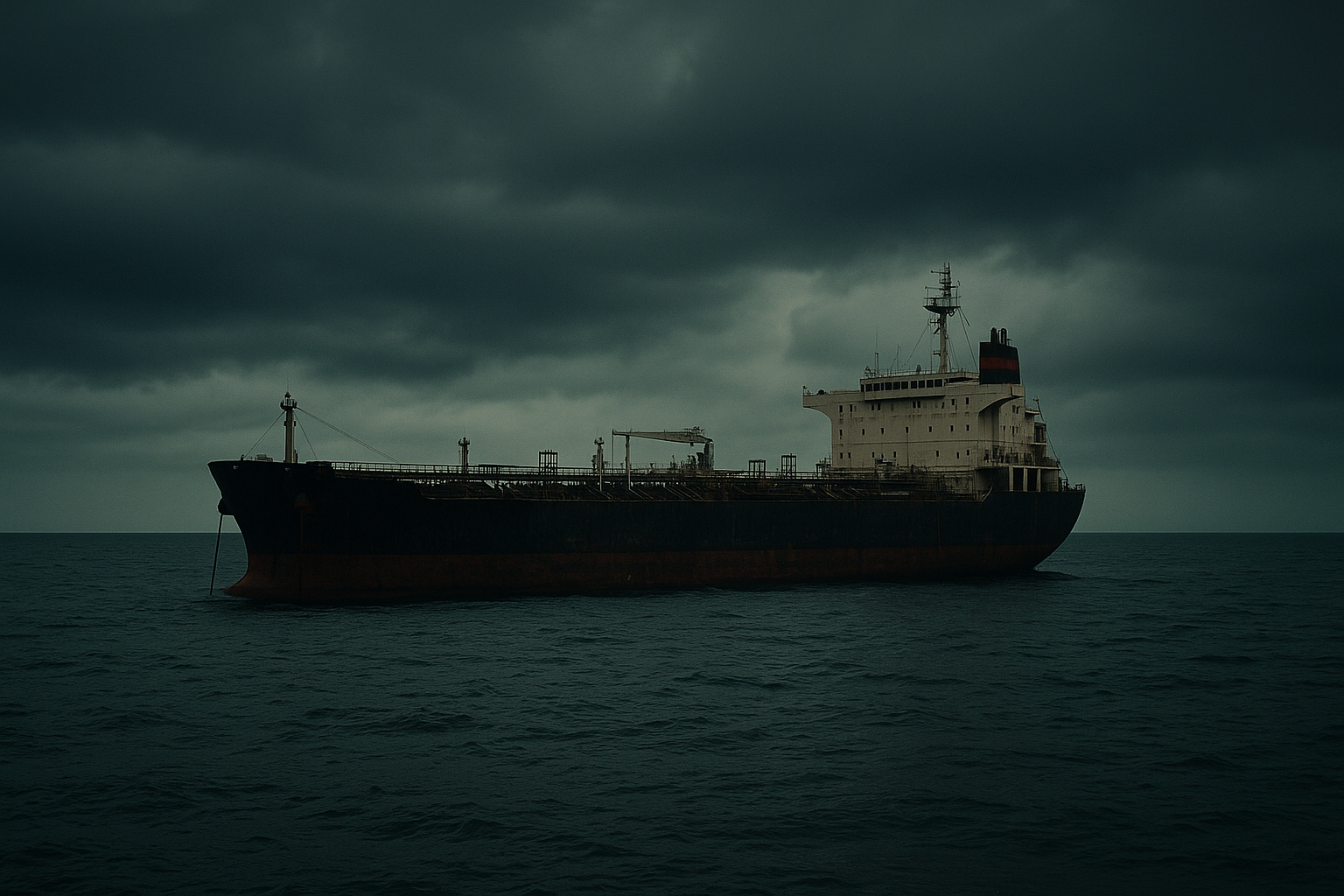
This large, modern vessel presented a different kind of mystery when it was found adrift in Australian waters.
Background:
The Jian Seng was a relatively large, 180-foot tanker/cargo ship. Her flag state and origin were unclear when found.
The Discovery:
In March 2006, the Jian Seng was discovered drifting without power off the coast of Queensland, Australia. Australian Customs and Border Protection Service officers boarded the vessel.
Conditions Onboard:
The ship was empty – no crew, no cargo (specifically, no oil, which was unusual for a tanker), and no fishing equipment. Her identification markings appeared to have been painted over, suggesting an attempt to conceal her identity or origin. The vessel was rusty but seaworthy. There was no sign of recent activity, and no distress signals had been received.
Investigation and Mystery:
A thorough investigation was launched. Efforts to identify the ship’s owner or operator based on her structure and limited remaining markings were difficult. Her journey leading up to her discovery was untraceable. The fact that she was empty, particularly of oil despite being a tanker, and had painted-over identifiers, strongly suggested involvement in illicit activities.
Theories:
- Illegal Fishing/Poaching: One theory was that she was being used as a mother ship for illegal fishing operations, and was abandoned when spotted or when something went wrong.
- People Smuggling: Another possibility was involvement in human trafficking, with the ship abandoned after migrants were transferred to another vessel or made it to shore.
- Illegal Cargo Transfer/Smuggling: The ship could have been used for transferring illicit cargo (drugs, etc.) at sea and then abandoned. The lack of oil was particularly suspicious; perhaps she was used to refuel other illegal vessels or had discharged an unknown cargo.
- Abandonment Due to Breakdown or Fear of Capture: Whatever the illegal activity, the crew likely abandoned the ship quickly to avoid arrest upon spotting authorities or experiencing a major mechanical failure.
Resolution (Partial):
Authorities eventually determined the ship was likely involved in some form of organized crime or illegal activity in Southeast Asia, potentially illegal fishing. Due to the lack of crew and clear ownership, and the logistical difficulty and cost of keeping her, the Jian Seng was eventually scuttled off the coast of Queensland in April 2006. The exact details of her purpose and why her crew abandoned her remain officially unknown, highlighting the challenges of policing vast ocean areas.
6. The Kaz II – The “Ghost Yacht” of Australia
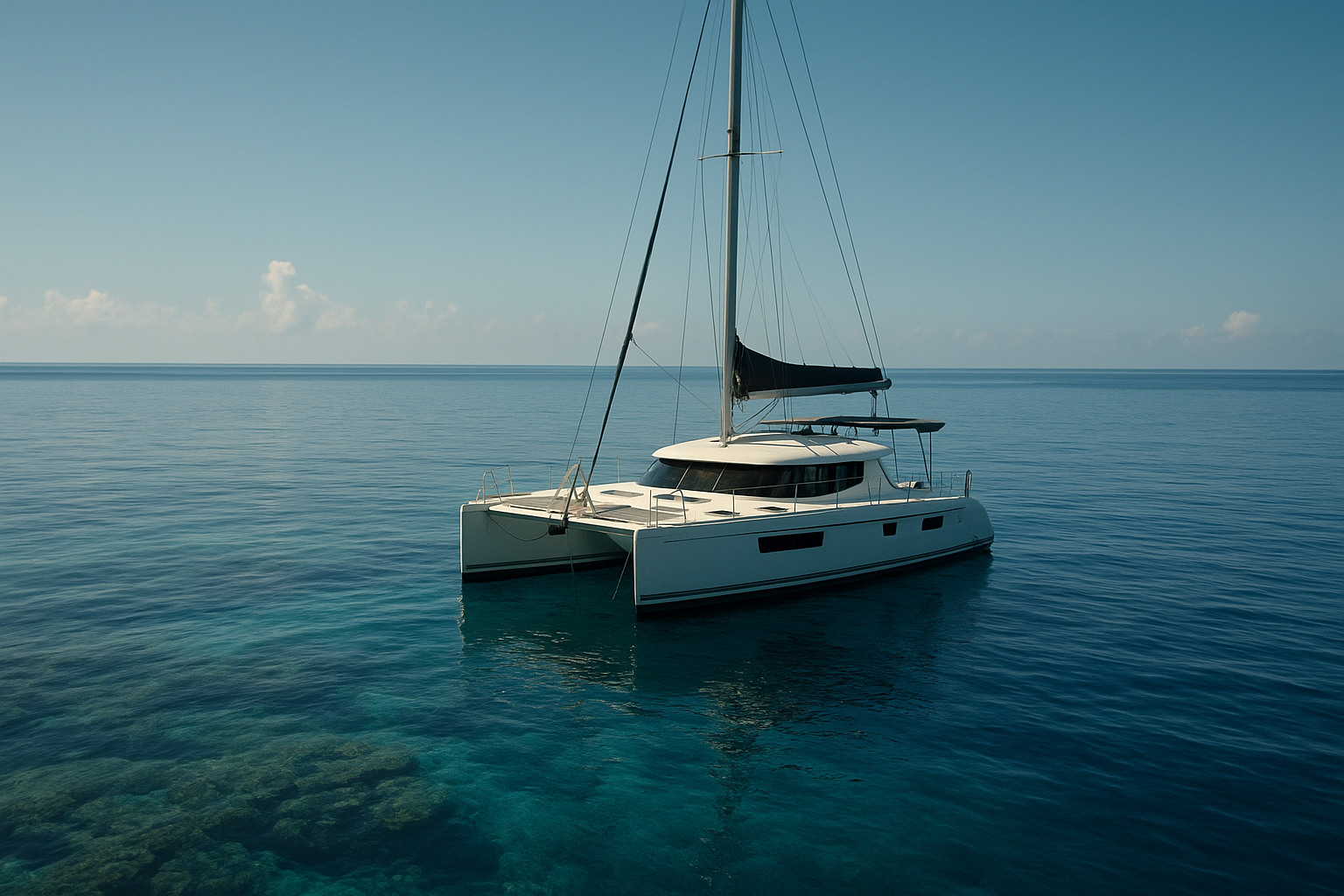
Like the Svalbard, the Kaz II is a more recent, and particularly eerie, case of a vessel found abandoned with no sign of its occupants.
Background:
The Kaz II was a 39-foot catamaran. She departed Airlie Beach, Queensland, Australia, on April 15, 2008, bound for Townsville. Aboard were three experienced sailors: Des Batten, the owner and captain, and his friends Peter and Derek Tunstead.
The Discovery:
The yacht was spotted adrift off the Great Barrier Reef on April 18th by a helicopter. Authorities boarded the vessel on April 20th.
Conditions Onboard:
What they found was perplexing. The engine was running, the laptop was on, the radio was working, and a meal was set on the table, seemingly ready to be eaten. The sails were up, but the jib sail was partly unfurled. Life jackets were stowed away, and the dinghy was still aboard. The only things missing were the three men.
Investigation and Mystery:
The lack of any sign of a struggle, distress calls, or clear reason for abandonment on a functioning vessel immediately raised questions. The official investigation concluded the most likely scenario was a series of unfortunate accidents:
- One of the men may have fallen overboard, possibly while trying to fix a fishing line (fishing rods were out).
- Another might have jumped in to rescue him.
- The third, perhaps unable to stop the boat quickly enough or also attempting a rescue, also ended up in the water.
- With no one left aboard to maneuver the boat or deploy safety equipment, and potentially hampered by the drifting boat or strong currents, all three were lost at sea.
Alternative Speculation:
While the official explanation is plausible, the sheer normalcy of the scene aboard the Kaz II – the running engine, the set meal, the stowed life jackets – left many feeling unsettled. It seemed unlikely that experienced sailors would get into trouble so quickly and completely without any attempt to use safety gear or send a radio call. Some speculated about foul play or a sudden, unexpected event like a rogue wave, but no evidence supported these.
Conclusion:
The bodies of the three men were never found. The official “accidental drowning” conclusion, while the most probable scenario given the available evidence, doesn’t entirely dispel the eerie mystery of a yacht found sailing itself with a meal waiting on the table, its crew having vanished into thin air. It highlights how quickly tragedy can strike at sea, even for experienced mariners.
7. The MV Joyita – Another Pacific Puzzle
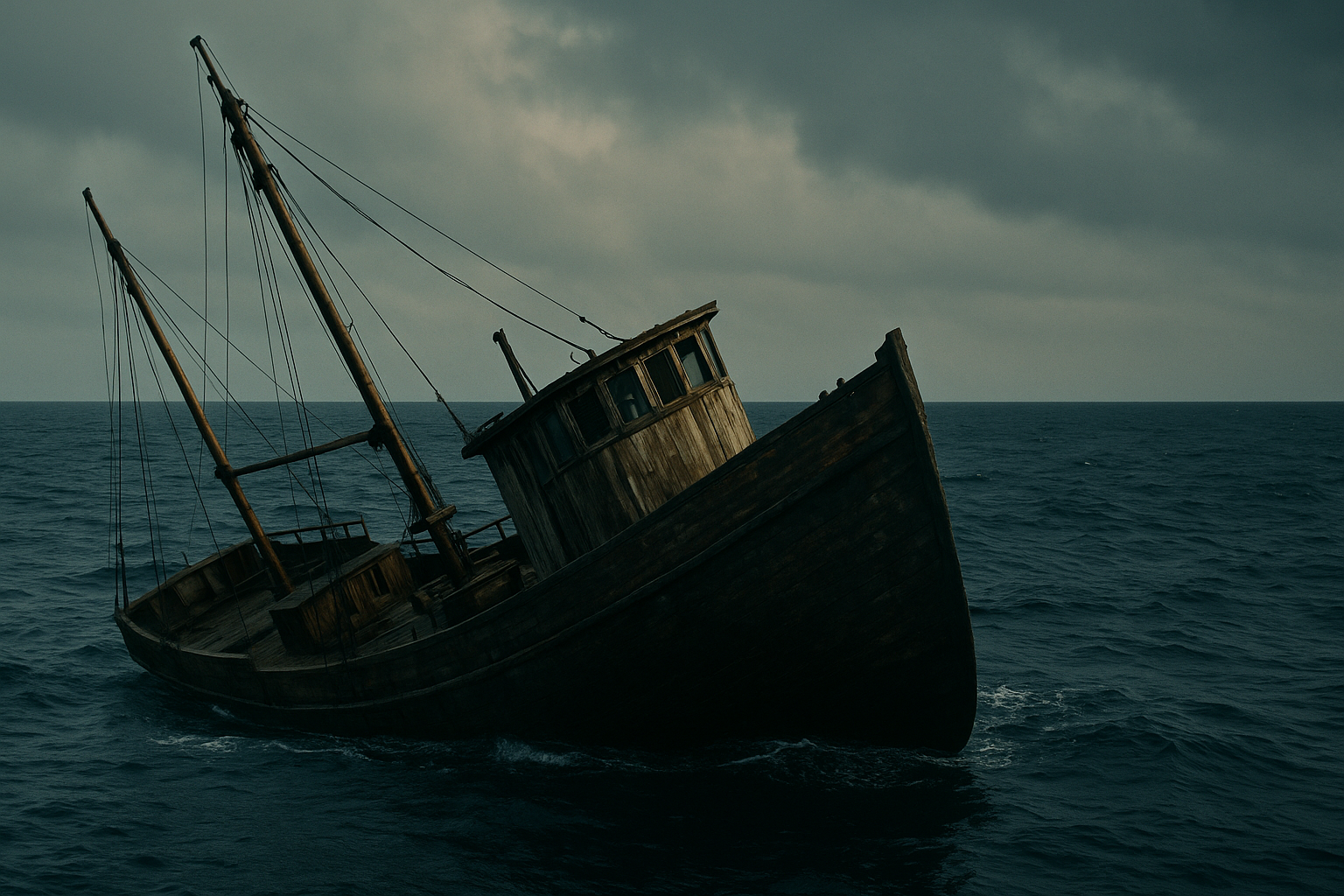
The MV Joyita is another classic ghost ship tale from the Pacific, with unsettling parallels to the Mary Celeste.
Background:
The MV Joyita was a 70-foot Ketch, built in 1931 as a luxury yacht but converted for use as a fishing and charter boat. Despite her age, she was known for her robust construction, including a hull made of five-inch thick cedar and cork lining, which made her virtually unsinkable.
The Disappearance:
On October 3, 1955, the Joyita departed Suva, Fiji, bound for the Tokelau Islands, a journey of about 530 miles. Aboard were 25 people: 16 passengers (including a government official and children) and 9 crew members. The journey was expected to take 24 to 48 hours. She never arrived, and no distress signal was received.
The Search and Discovery:
A massive search was launched after she was overdue. After five weeks of searching, the Joyita was found on November 10, 1955, adrift about 600 miles west of Fiji, listing heavily.
Conditions Onboard:
The ship was severely damaged. She was listing badly, and her deck was partially submerged, indicating she had taken on a large amount of water. Her radio was found tuned to the international distress channel but was inoperative, possibly due to wiring issues or being submerged. Four tons of cargo, medical supplies, and navigational equipment (sextant, chronometer) were missing. Three of the four life rafts were also gone. What remained aboard included tangled fishing gear, medical instruments scattered on the floor of the doctor’s cabin, and damage to the bridge. The ship’s clocks had stopped at 10:25.
The Missing:
All 25 people aboard were gone. Like the Mary Celeste, there was no sign of bodies or immediate explanation for their departure.
Investigation and Theories:
An official inquiry determined the Joyita was in poor condition with serious hull leaks and a corroded cooling pipe that likely led to engine failure. The pumps were also inadequate. They concluded the ship took on water, leading the captain to decide to abandon ship. However, this didn’t fully explain everything.
- Abandonment: The most accepted theory is that the ship began taking on water, her pumps failed, and with the engine broken, the situation became dire. Fearing the ship would sink, the crew and passengers used the life rafts to evacuate. However, the Joyita was designed to be unsinkable due to her construction, even when flooded. Abandoning her, especially in damaged life rafts, may have been a fatal error.
- Piracy: The missing cargo and damaged bridge led to speculation about piracy, perhaps by Japanese fishermen. However, this was not conclusively proven, and it didn’t explain why the entire crew and passengers vanished without a trace or struggle.
- Japanese Fishermen Encounter: A variant suggested the Joyita might have collided with a Japanese fishing vessel, causing damage, and the Japanese crew either took the Joyita crew aboard or they abandoned ship into rafts and were subsequently lost.
- Injury/Medical Emergency: The scattered medical supplies fueled a theory that a medical emergency (perhaps the doctor was injured or killed) contributed to panic or inability to manage the crisis.
Legacy:
The MV Joyita remains a compelling maritime mystery. While the official report pointed to poor maintenance and a failed attempt to abandon ship, the complete disappearance of everyone on board and the slightly conflicting evidence (an unsinkable ship abandoned, missing equipment) leave room for doubt and continued speculation. It’s a stark reminder that sometimes, abandoning a sinking (or merely distressed) ship can be more dangerous than staying aboard.
8. The Ghost Ship of Aoshima – A Modern, Unsettling Find
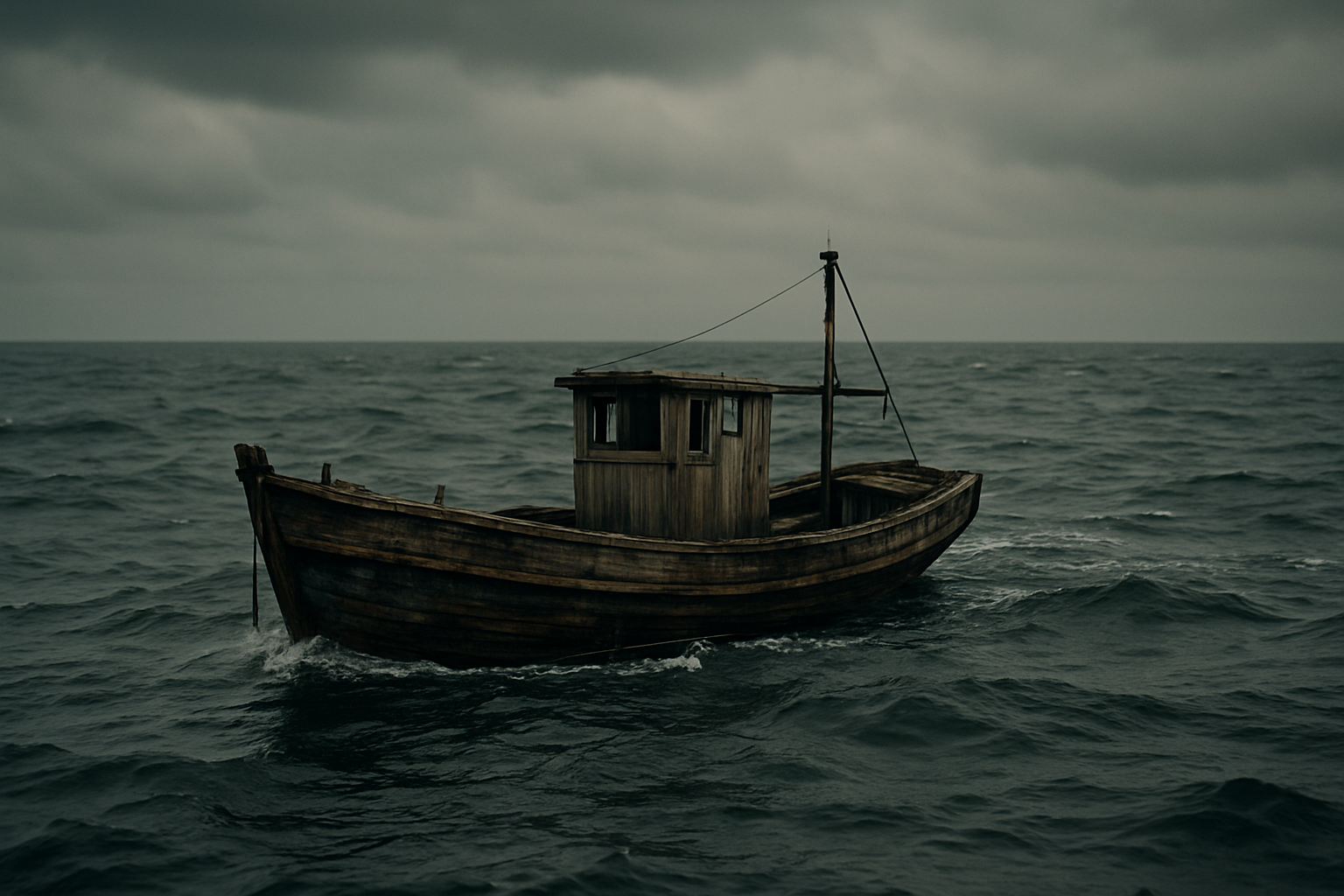
In recent years, environmental and maritime authorities have encountered numerous small, often dilapidated, wooden boats drifting in the seas off Japan. While not all are strictly “mysterious,” their frequency and the discovery of human remains on some have created a modern, unsettling phenomenon often referred to as “ghost ships.”
Background:
These vessels are typically small, old wooden fishing boats. They are often found in the Sea of Japan, having drifted from the Korean Peninsula, primarily North Korea.
The Discovery:
These boats are discovered sporadically throughout the year, sometimes empty, sometimes containing the decomposing remains of their occupants. They are often in poor condition, lacking modern navigation equipment, and show signs of engine failure or damage.
Conditions Onboard:
When remains are found, they are often in an advanced state of decomposition, suggesting the boats drifted for a long time. Few provisions or supplies are typically found. The boats themselves are simple, often crudely built, and ill-equipped for long voyages.
The Mystery and Explanation:
While not a single, isolated mystery like the Mary Celeste, the phenomenon raises questions about the fate of the people aboard and the circumstances of their voyage. The prevailing explanation is related to North Korean defectors or fishermen:
- Defection Attempts: Some boats may carry people attempting to escape North Korea, who get into trouble at sea due to the poor condition of the vessel, lack of supplies, or severe weather.
- Fishermen Lost at Sea: North Korea has pushed its fishermen to increase catches. Using old, unsafe boats in increasingly distant and dangerous waters could lead to engine failure, getting lost, or being swept away by currents and storms, resulting in death at sea.
- Lack of Communication/Rescue: Given the nature of the North Korean regime, there are likely no effective search and rescue operations for these vessels once they are adrift, and survivors are unable to send distress signals.
Significance:
These “ghost ships” are a tragic modern mystery, highlighting not just the dangers of the sea but also the desperate socio-political conditions that might force people into such perilous journeys in ill-equipped vessels. While the cause (engine failure, lack of supplies, rough weather) is often evident, the individual stories and the full scale of the human tragedy remain largely unknown, as the occupants perish far from shore. They are a somber reminder that ghost ships are not just historical footnotes.
9. The High Aim 6 – Another Asian Fishing Vessel Mystery
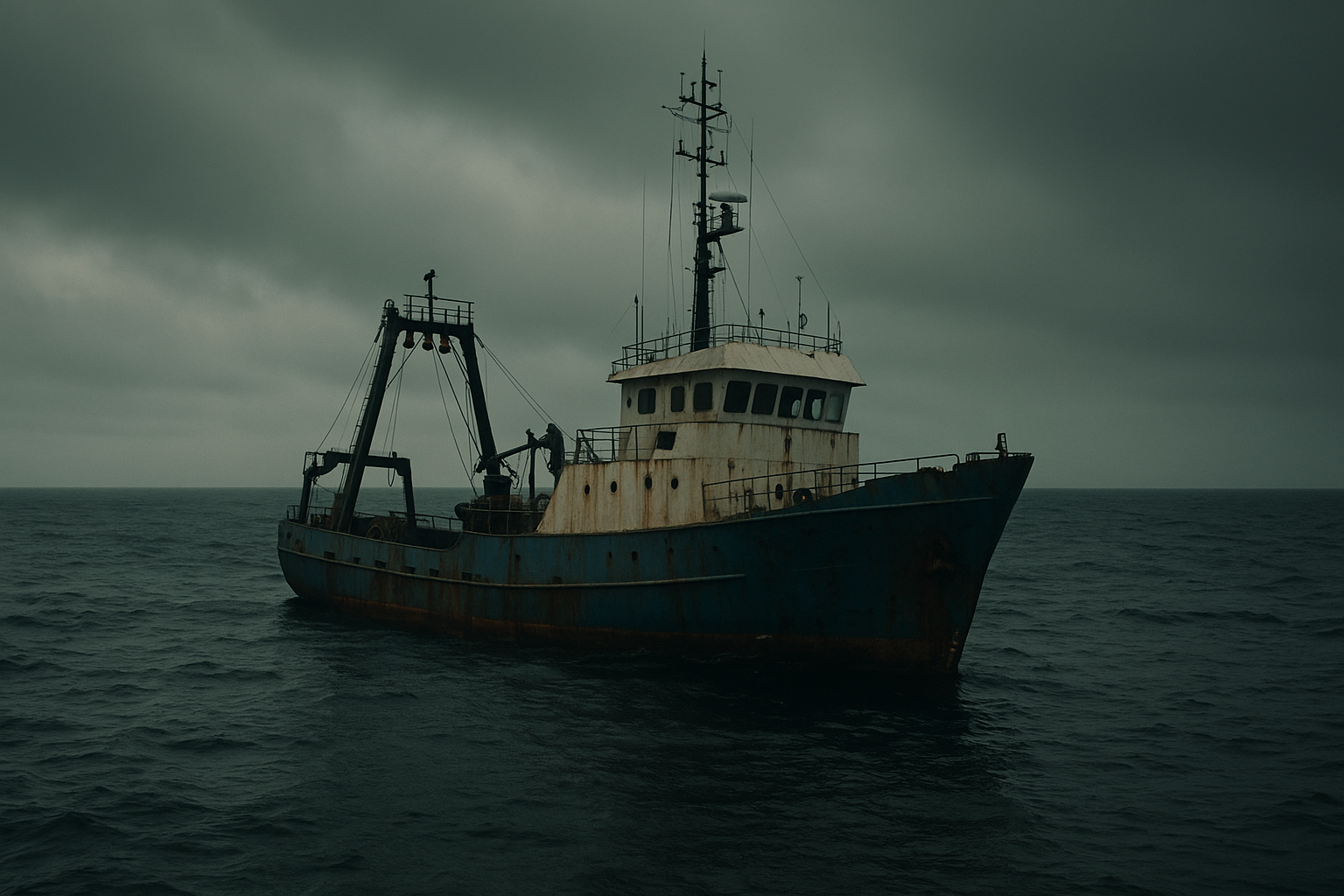
Similar to the ghost ships found off Japan, the High Aim 6, a Taiwanese fishing vessel, was discovered under circumstances pointing towards a swift and unexplained abandonment.
Background:
The High Aim 6 was a longline fishing vessel registered in Taiwan.
The Discovery:
In August 2003, the High Aim 6 was found drifting in Australian waters, about 80 nautical miles off the northwest coast, near the Ashmore Islands. Australian authorities boarded the vessel.
Conditions Onboard:
The ship was in good condition, with food, supplies, and personal belongings still aboard. There was no sign of distress or damage to the vessel itself. The engine was operational, and the ship was simply drifting with the current. The entire 11-person crew (reportedly Indonesian and Taiwanese) was missing.
Investigation and Theories:
The lack of any indication of trouble aboard a functional vessel with all its supplies intact made the disappearance highly suspicious. The refrigerator was full of fish, suggesting they were actively fishing shortly before abandoning ship.
- Mutiny: The most prominent theory that emerged during the investigation was mutiny. It was speculated that the Indonesian crew members may have mutinied against the Taiwanese captain and officers, killed them, and then escaped on another vessel (perhaps a rendezvous boat), leaving the High Aim 6 adrift.
- Illegal Activity: As with the Jian Seng, the possibility of the vessel being involved in illegal fishing or other illicit activities that led to the crew’s sudden departure was considered.
- Transfer and Abandonment: The crew might have transferred to another vessel voluntarily (perhaps unexpectedly), leaving the ship to drift, though the motive for this is unclear unless tied to illegal activity or defection.
Partial Resolution:
The owner of the High Aim 6 was eventually located in Taiwan, but he claimed to have lost contact with the vessel in July 2003. One Indonesian crew member, who was not aboard when the ship was found but was later apprehended elsewhere, provided testimony supporting the mutiny theory, stating the captain and chief mate were killed. However, the full truth and the fate of the remaining crew members were never definitively established.
Mystery:
While the mutiny theory is the most likely explanation supported by some evidence, the High Aim 6 remains a ghost ship whose exact story is pieced together from limited information and speculation. The image of a perfectly functional fishing vessel, full of fish, abandoned by its entire crew, adds it to the list of unsettling maritime puzzles.
10. The Ghost Ship of Christmas Island – A Recent Unidentified Drifter
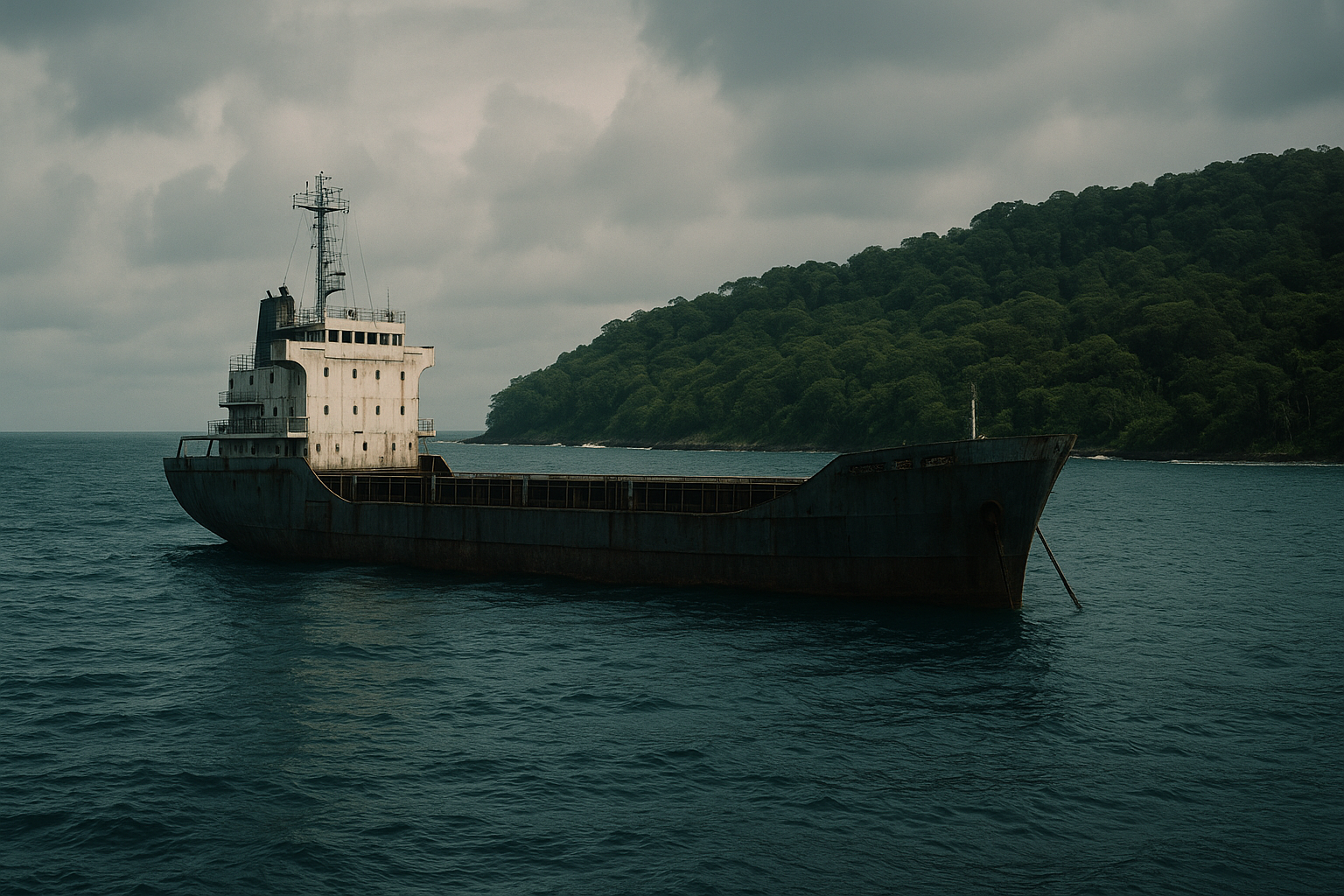
In late 2018 / early 2019, reports surfaced about a large, unidentified vessel found drifting near Christmas Island in the Indian Ocean, presenting another modern enigma.
Background:
Details about this vessel are sparser than some historical cases, as it was a relatively recent event and information might be held by authorities involved in its handling. It was described as a large cargo-type vessel.
The Discovery:
The ship was found adrift and seemingly abandoned near Christmas Island, an Australian territory in the Indian Ocean. Australian authorities, likely Border Force or Navy, were involved in intercepting and boarding the vessel.
Conditions Onboard:
Initial reports indicated the ship was relatively large, possibly a freighter or large fishing vessel. Like other ghost ships, she was found with no crew aboard. The condition of the vessel and any cargo (or lack thereof) were not immediately clear in public reports, but the fact that it was drifting and abandoned in that location raised immediate concerns.
Investigation and Theories:
The discovery of a large, unidentified, abandoned vessel in Australian waters immediately triggered an investigation into its origin, ownership, and purpose. The location near Christmas Island, which has been a destination for asylum seekers, quickly led to speculation:
- People Smuggling: The most probable theory investigated was that the ship was being used for people smuggling. Migrants may have been transferred to smaller boats or successfully reached shore (either Christmas Island or potentially mainland Australia) before the larger vessel was abandoned. The crew involved in the smuggling operation would have also departed to avoid capture.
- Illegal Fishing/Other Smuggling: While people smuggling was a primary focus due to the location, the vessel could have been involved in other forms of illicit cargo smuggling or illegal fishing, abandoned when authorities were potentially detected.
- Abandonment Due to Breakdown (less likely): While possible, a large, intact vessel found drifting suggests deliberate abandonment rather than a crew being forced off due to a non-catastrophic breakdown, especially without a distress signal.
Resolution (Partial):
Authorities took control of the vessel. Specific details of the investigation and the vessel’s ultimate fate (e.g., scuttling, identification) are not always made public due to operational security or ongoing inquiries, especially if linked to criminal activity. However, the strong likelihood is that this was another case of a vessel used in illegal operations being abandoned by its crew to avoid apprehension.
Mystery:
The “Ghost Ship of Christmas Island” highlights that modern ghost ships are often linked to contemporary maritime crimes like smuggling. While the why (to avoid capture) is often suspected, the who, the where they came from, and the ultimate fate of the people involved often remain part of an ongoing or unpublicized investigation, leaving the public with just the image of a large, silent vessel drifting on the waves.
Conclusion
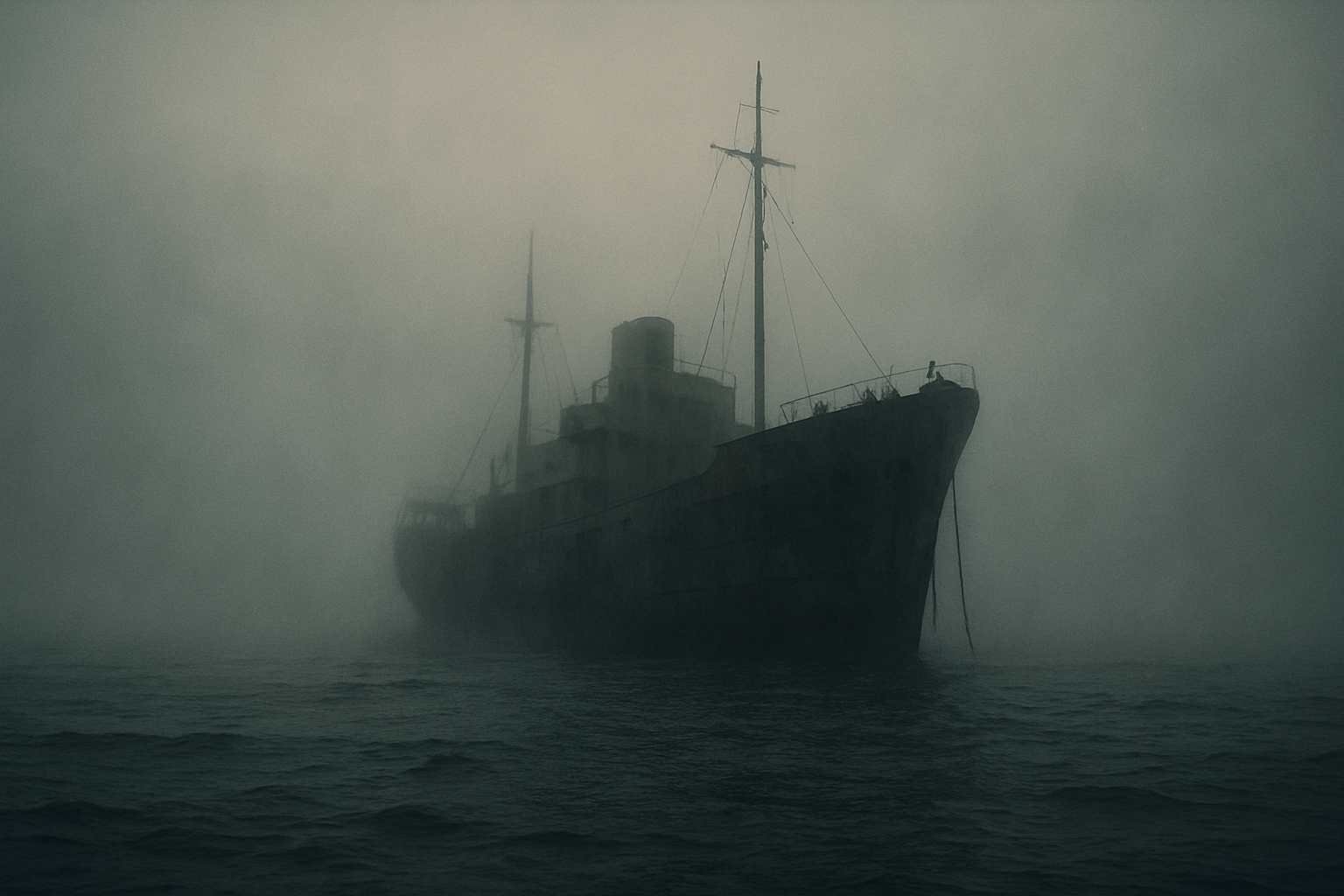
From the historical enigma of the Mary Celeste to the tragic modern reality of the “ghost ships” found off Japan, abandoned vessels continue to fascinate and unsettle us. These ships, found empty and adrift, are stark reminders of the ocean’s power, its vastness which can hide terrible events, and the sometimes-unexplained fates of those who venture onto it.
Whether the result of sudden, catastrophic accidents, desperate attempts to survive, criminal activities gone awry, or truly inexplicable circumstances, each ghost ship tells a silent story of a voyage that ended not in port, but in mystery. They drift as silent witnesses to events unseen, their empty decks and cabins holding secrets lost to the waves and the passage of time, ensuring that the legend of the ghost ship will forever sail the seas of human imagination.


